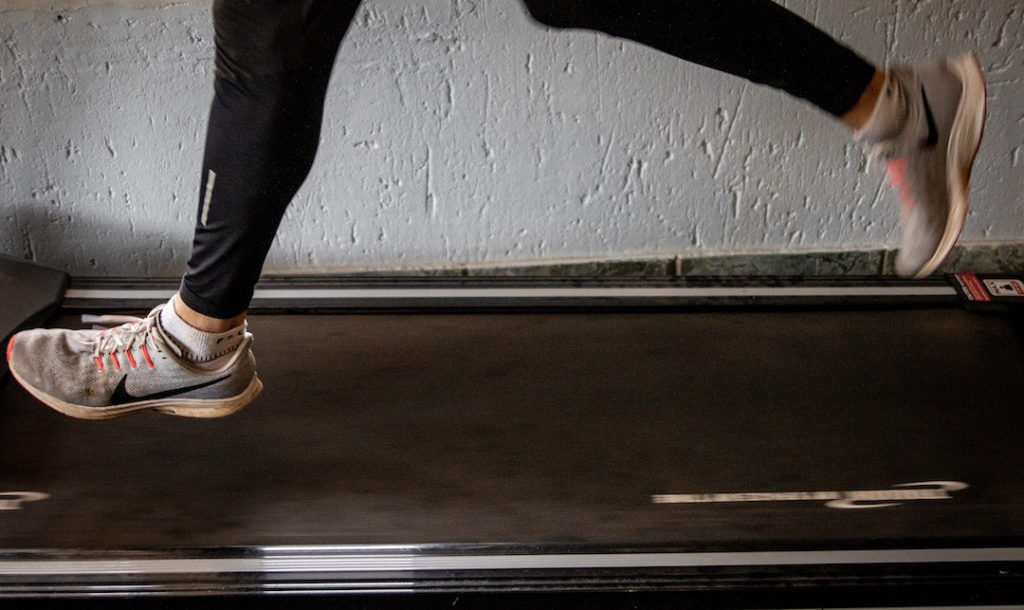When you begin training, it’s difficult to know how hard to train to turn your goals into reality. At first, the initial excitement of taking your first steps on what you hope to become a lifelong commitment to fitness fuels your workouts and gives you an extra push when you need it. In the early days, you finish your workout feeling like you’ve pushed yourself, with the sweat and soreness to prove it, but this doesn’t last forever.
You’re now left asking yourself whether you need to work harder to achieve the same result, or should you use other indicators of a good workout instead to ensure the long-term is feasible?
Your body is remarkable as much as it is adaptable and as you will find throughout your fitness journey the same effort doesn’t take the same toll on your body. You’ll also be surprised how quickly this happens too.
Measure Your Progress – Be Guided by Your Goal
Working hard enough all depends on your goals. In short, if you’re achieving your goals, you’re working hard enough. Using measurements such as how tired you feel after the workout or how much water you need to take on after sweating doesn’t take into account how your fitness will improve over time or the current state of your nutrition, sleep or mood.
When training, finishing every single session feeling like you will never walk again is not the same as a good workout. What good is training if your body can only hack doing it once per week? It’s time to learn how to balance intensity with sustainability.
If your goal is Fat Loss, here’s what you should be looking for…
Other than simply using excess calories and stored glycogen, your workouts have several important roles. During a fat loss plan, you’re likely to be eating such that you’re in a sustained calorie deficit which can place you at risk of muscle loss. Resistance and aerobic training helps preserve muscle mass (by using it) and makes it more likely that you’re losing fat rather than muscle tissue over an extended period.
Working hard enough for fat loss means you’re training regularly so that you finish the workout tired, but you’re also ready to do it again the next day. This means easing off a little and placing consistency in your training over the intensity. This is why many people opt for low impact training for fat loss such as walking, as you can burn a lot of calories and place the muscles in your legs under tension for an extended period but not take them out of action for the next few days like you would with a heavy deadlift session.
This doesn’t mean you must be training every day, it’s enough to be training three days every week but fat loss goals that preserve muscle rely on you being able to exercise routinely and it’s wise to make sure you don’t spend more than a day or two without doing anything active, even if that’s just some light movements with a small weight.

Fat Loss Rules of Thumb:
– Work hard enough so that your heart rate is increased but you’re still comfortable
– Aim for at least three x one hour sessions per week. You don’t need to train for more than an
hour
– Make sure you’re not working too hard that you need more than two days off between workouts. It’s all about consistency over time.
If your goal is Muscle Growth, here’s what you should be looking for…
Working hard enough for muscle growth means in the short run, you can comfortably train each muscle group twice per week (except legs, legs are different). Also, you can also progress the weight you’re lifting each month. The exception to this would be experienced bodybuilders, but when you reach this stage, you’ll already have years of experience of what works for you personally.
Pushing muscle to failure demands rest and time to recover and grow and so splitting muscle groups across four-six days per week is the key to finding the right frequency and volume.
If you’re at the beginning of a muscle growth plan, focus on form and performing movements correctly even if this means you’re lifting lighter weights. You’re in this for the long run and every single person who has been weight training for several years looks back on their first year and wished they’d learned the right way, the first time around. Doing this will make your training feel less intense, but this is ok.
A one-week muscle growth split plan. Adjust for your priorities. Muscle groups are a sample and follow a Push, Pull, Legs split.
Day 1: (Push movements) Chest, Shoulders etc
Day 2: Rest – light movements to encourage blood flow to the muscles trained
Day 3: (Pull movements) Back, Biceps etc
Day 4: Legs – train hard and make this day count
Day 5: Chest, Shoulders (this gives you three days since your first chest workout)
Day 6: Rest – light movements to encourage blood flow to the muscles trained
Day 7: (Pull movements) Back, Biceps (it has been three days since the last exercise on this group)
This gives you plenty of rest between muscle groups and days off for your body to recover. Training hard enough to stimulate muscle growth demands a lot from your body neurologically and longevity is important. This split also allows you to target major muscle groups twice per week and encourage continuous muscle growth.

Muscle Growth Rules of Thumb:
– Train hard enough so that the last few reps of each set is difficult. This ensures you’re training to failure.
– Nutrition and rest are just as important. Building muscle isn’t just about lifting heavy weights.
– Don’t overtrain. Twice per week for each muscle group is enough and allows for ample rest
between training.
For Everybody
Don’t worry about getting it wrong. There is a lot of science behind every workout you do but even when you’re not training optimally, you’re doing more than nothing. The above serves as a guide but everybody is different and it’s important for you to listen to your body. If you need more rest to protect yourself from injury, then take more rest.
Begin with the basic idea and adapt it to you. Over time you’ll learn more about what your body is telling you and that’s when you can really begin to optimise your training.












